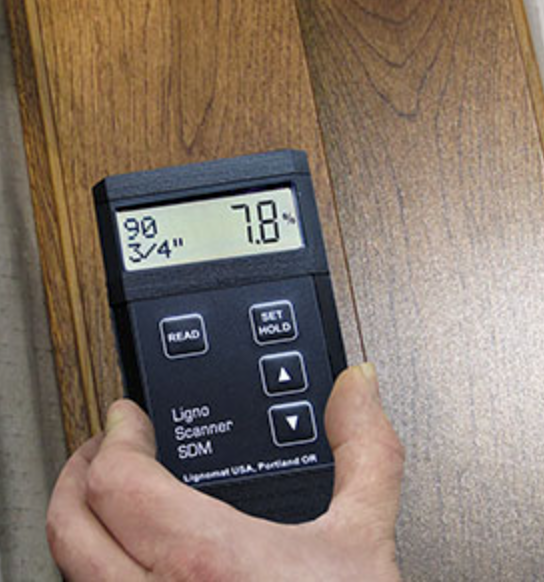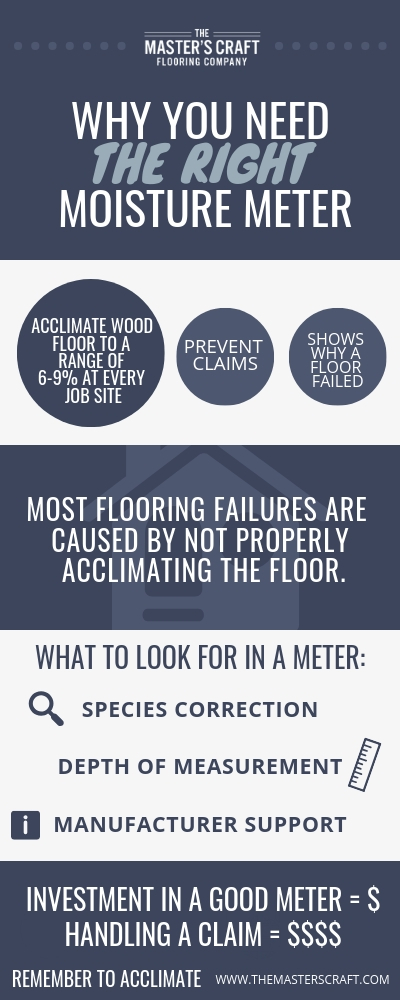So, this is why you need a good moisture meter:
- Wood floors need to be tested because they may be too dry or too moist. (Subfloors also need to be tested, see NWFA’s article about it)
- Moisture meters can prevent claims by making sure the moisture content of wood is appropriate for the installation area.
- It can help determine why a floor may have failed.
What type of moisture meter should you get?
There are two types of moisture meters: pin and pin-less.
Pin meters use pins to measure the electrical resistance which is based on the amount of water in the wood.
Pinless meters use radio frequency based on the specific gravity of the wood species. All you have to do is place the meter on the floor.
There is a perception that pin meters are more accurate than pin-less. In a lab, this may be technically true within a very small, standardize scientific test sampling.
In practice, we have found pinless meters to be more accurate for the average wood flooring installer.
What to consider when buying a moisture meter:
Internal Species Correction
The average moisture meter is calibrated to measure the moisture content of Douglas Fir wood species. So unless you only install Douglas Fir, you’ll most likely need to correct your meter for your install.
Why this is important: Better meters have internal correction settings to accurately read different species. You also can get charts with the specific gravity for other species.
Depth of Measurement
Most pin-less meters measure a ¾” depth and read the moisture content across that depth. Others provide a variable depth reading, usually the option to measure at ¾” and ¼”.
Why this is important: This allows you to evaluate the top and bottom of the board. Sometimes the board is more or less moist on one side. You can also measure the moisture content of engineered flooring veneers.
Manufacturer Species Support
Many manufacturers do not provide any support for reading exotic species like bamboo, Brazilian Walnut, or Acacia flooring. Internal species correction also doesn’t usually include exotic species.
Why this is important: You don’t want to be Googling what the MC for your floor should be while your team and customer is waiting.
Lignomat routinely tests and provides correction settings for all kinds of species of flooring, and will provide needed technical support when asked. This is why we recommend and primarily use Lignomat meters within our company.
Our recommended moisture meter

While there are many options, the average installer needs to measure a variety of wood species and different types of construction.
In addition, you need the ability to measure a large sample of boards in different areas of the home. This is why technical support and confidence in the process is important.
It is for that reason that we primarily recommend the Lignomat SDM meter for our customers to purchase. We believe it is the clear leader in the industry and any of our locations can provide this meter for you.


